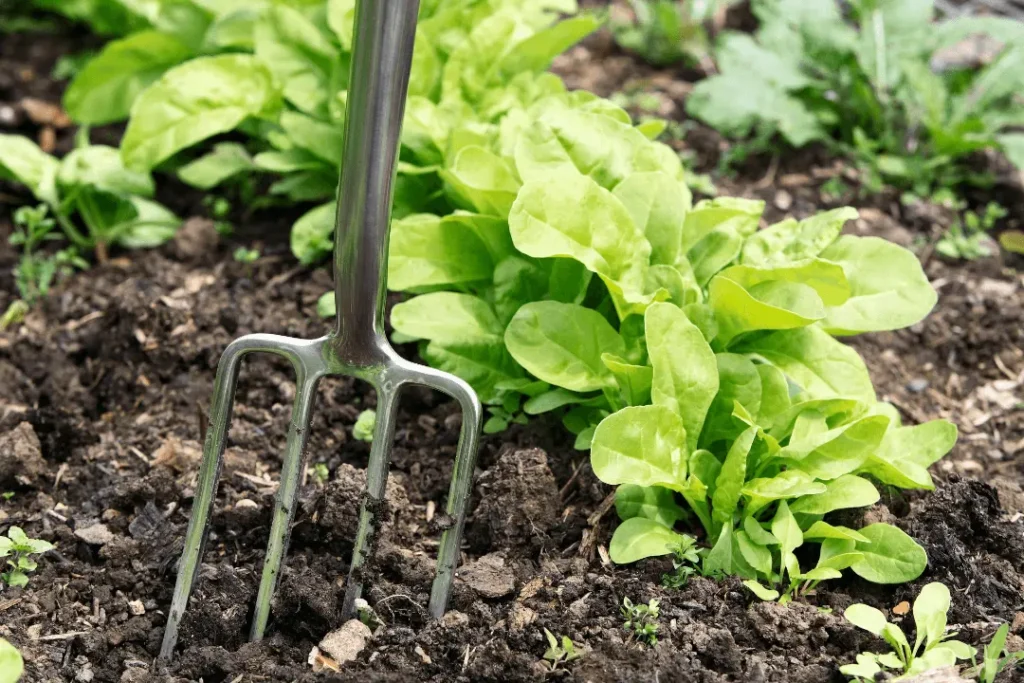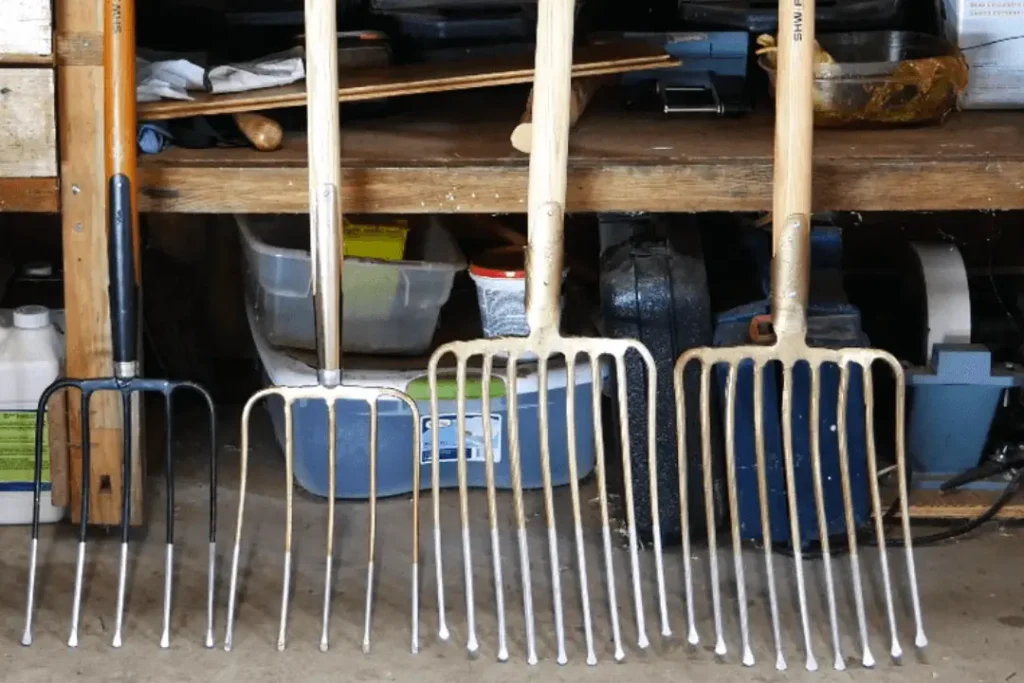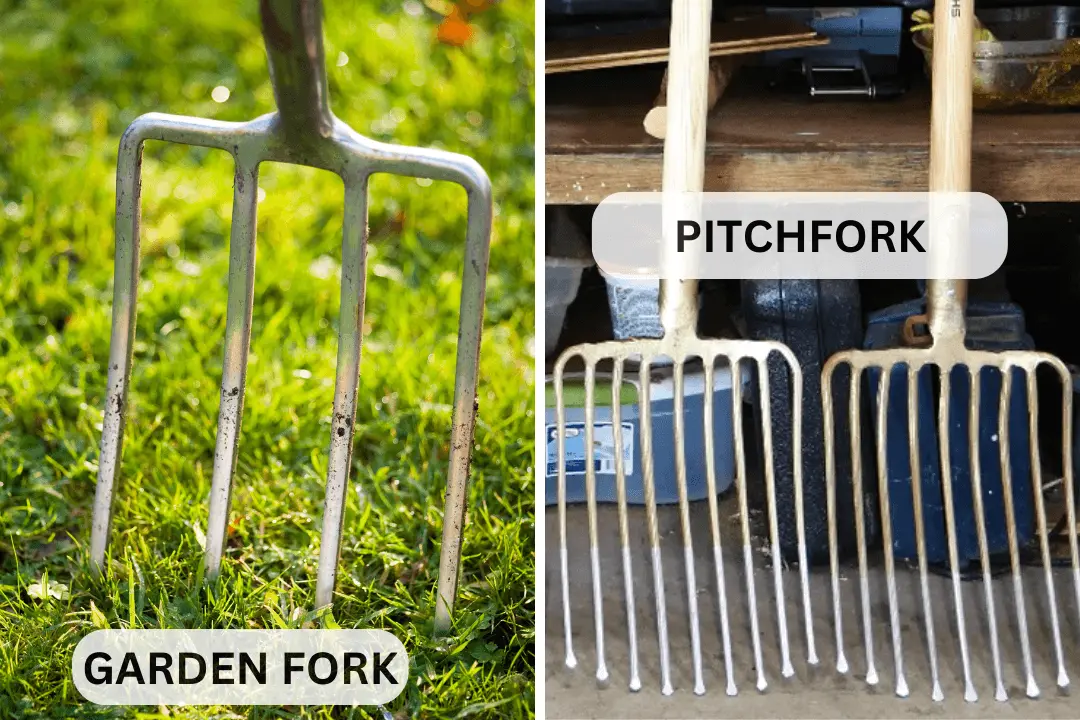Garden Fork Vs Pitchfork: Deciding Which Tool Will Meet Your Garden Needs
Gardening tools are available in a variety of sizes and shapes, each specifically designed to accomplish a particular task. Two common tools for confusion comprise garden fork and pitch fork. pitch fork and the gardening fork. Although they appear to be like they are at first glance, they serve different purposes in agriculture and gardening.
In this detailed guide, we’ll examine the main differences between these forks. We’ll also examine the different purposes of a pitchfork and assist you in choosing the ideal pitch fork to use to complete mulching tasks.
Though both tools should be in any gardener’s arsenal, their individual uses, benefits, designs, and benefits vary significantly – this guide will explain this distinction between pitchforks for garden use versus forks for garden use so you can make an informed choice that meets all your gardening requirements. You can also check out our related blog on SMARTTOOLBUDDY.COM.
A Detailed Comparison Between Garden Fork Vs Pitchfork
In this post, you’ll learn the primary use, benefits, and other important aspect of a garden fork vs pitchfork one by one.
Understanding a Garden Fork

Garden forks, also referred to as digging or spading forks, typically feature four strong, short tines made of steel designed to dig quickly into the soil with minimum effort. Their handles typically comprise wood or fiberglass for maximum user comfort. You should know how to use a garden fork properly.
Primary Uses
Garden forks have various applications in the garden. Most commonly they’re employed to:
1. Digging and Loosening Soil Garden forks can help loosen and loosen compacted soil, turning over it for beds in gardens or creating garden beds.
2. In addition, garden forks create holes in the soil by creating small holes to aerate it further while aiding water filtration – creating healthier root systems and air circulation in general.
3. Mixing Amendments Garden forks are ideal tools for adding compost, manure and other fertilizers into a garden bed. Whilst harvesting root crops with long, sturdy tines allows you to effortlessly lift and harvest root veggies like carrots and potatoes without harming the plants themselves.
5 garden fork uses
Material The tools may be made of various materials, however the garden forks typically are made of sturdy materials like steel forged to withstand the strain of digging. Forks that pitch could be made of lighter materials to ease fatigue when used for long periods of time.
Design:
The gardening fork usually has thicker, thinner tines that are closer to each other. On the other hand to a pitch fork has longer, tinier tines that have a wider space.
Scope:
Garden forks are mostly used to dig, turn soil and aerating soil that has been compacted. pitch forks however, for instance are made for lifting the loose material such as straw, hay or compost.
Tine counts:
Garden forks generally have four tines. However, pitch forks may have 2 to 6 tines according to their purpose.
Long handle:
Garden forks typically have handles that are shorter to allow better control when digging. Forks that pitch typically come with longer handles to give leverage for lifting and tossing materials.
Comparative Analysis: Garden Fork vs Pitchfork
To further understand the distinctions between these two tools, we present a comparative analysis based on key features and uses.
Here’s a table that compares some of the most well-known pitch forks that are suitable for mulching:
| Model | Tine Count | Material | Handle Length | Weight |
| True Temper 2812200 | 4 | Forged steel | 30 inches | 3.5 lbs |
| Fiskars 46 inch | 4 | Aluminum | 46 inches | 2.9 lbs |
| Truper 30323 | 5 | Steel | 54 inches | 3.7 lbs |
| Razor-Back 2826700 | 5 | Forged steel | 48 inches | 4.2 lbs |
| Corona GT 3040 | 4 | Steel | 32 inches | 3.3 lbs |
Understanding Pitchfork Technology

Design and Structure
Pitchforks differ from garden forks by having long and slender tines that range in size between two and eight. Their tines tend to be rounder in comparison to garden forks, giving greater leverage when throwing or lifting objects. Their handles usually offer greater leverage for throwing or lifting.
Primary Uses
Pitchforks are versatile tools used for various purposes, including but not limited to:
- Moving Loose Materials Pitchforks are ideal for moving loose materials like straw, hay leaves, compost and other organic waste materials around quickly and safely. When used to turn compost piles more frequently and accelerate decomposition
- Turning Compost: Long tines on pitched forks make turning and aerating compost piles much simpler – further helping speed decomposition!.
- Spreading Mulch: Spreading Mulch When spreading mulch over garden beds, the pitchfork’s design allows for an even distribution with minimum effort.
- Handling Manure: processing Manure Both gardeners and farmers utilize pitchforks to move manure which contributes to soil fertility.
5 Pitch Fork Uses
An pitch fork is a multi-purpose tool with a variety of uses in the fields of agriculture and gardening. Here are five of the most common applications of this useful implement:
1. Moving Hay and Straw
One of the main functions of pitch forks pitch fork is to move and lift the loose, light materials like hay or straw. The wide spacing of the tines allows for ease of penetration and lifting the materials with no excessive clumping.
2. Spreading Mulch
The pitch fork is a great instrument for spreading mulch evenly over garden beds. The tines break up clumps and spread the mulch evenly which helps improve the retention of moisture and less weed growth.
3. Turning Compost
This pitch fork’s design is ideal to turn and aerate compost piles. The long tines easily get into the compost pile, allowing you to move and mix the material effectively and speed up the process of decomposition.
4. Harvesting Root Crops
A few gardeners employ the pitch fork to gently lift root crops such as potatoes out of the soil. The tines are spaced widely to reduce the possibility of destroying the crop when harvesting.
5. Cleaning Animal Stalls
In the agricultural setting it is common to see the pitch fork is frequently employed to clean stalls and pen. It is effective in getting rid of bedding materials that have been soiled and manure, while leaving clean bedding.
When making the choice between a garden fork and pitchfork, consider what tasks will need to be completed within your backyard.
1. For Soil Prep and Digging
If your aim is to construct gardens or loosen soil that has become compacted or mix soil amendments, using a gardening fork is the best way. With its strong tines and sturdy design, this tool makes an excellent addition to your soil management.
2. Pitchforks Are Ideal for Handling Organic Materials
If your primary concern is managing organic matter such as compost, mulch, hay or straw then pitchforks provide the optimal way of moving and aerating these substances efficiently. Their long tines and longer handle allow you to move them around effectively and aerate efficiently.
Tips for Effective Garden Fork vs Pitchfork Use
Garden Fork Tips
- Keep Your Tip Sharp To ensure an effortless entry into the soil, keep the tines razor sharp to provide easy entry.
- Proper Grip
- Make sure both hands grip the handle for more control and greater leverage.
- Normal Cleaning
Clean the tines after every use to prevent build-up of soil and corrosion, using your body weight as leverage when lifting heavy weights with your pitchfork.
Pitchfork Tips
- Leverage technique Use the weight of your body as leverage while lifting.
- Pitchfork Storage: Keep in a dry area to avoid rust
- Handle Care: Inspect the handle regularly for cracks, splinters or any damage; replace as necessary.
Conclusion
In the end, knowing the difference between pitch fork and garden fork is vital to every gardener. While the garden fork excels in digging and preparation of soil however, pitch fork excels at soil preparation, pitch fork excels in handling loose materials such as mulch, hay, and compost. If you select the appropriate equipment for the job it will help you increase your gardening efficiency and attain greater results for your outdoor areas.
Make sure that, regardless of whether you’re making use of an ordinary pitched fork in the garden or a mulching machine, the right technique and routine maintenance will ensure that your garden tools will last for a long time to be.
Frequently Asked Questions About Garden Forks vs Pitchfork
What is the Difference Between Garden Forks and Pitchforks?
A garden fork has small, heavy tines designed to dig and turn soil. Conversely, pitchforks feature thick long tines designed for lifting loose materials like straw or hay.
What is the difference between a pitchfork and a hay fork?
A pitchfork and hay fork appear similar, yet one differs by including more tines which’re thinner and further apart than its counterpart. Both tools can be used for moving Hay, though the latter was designed specifically to accomplish that task.
What is the garden fork used for?
A garden fork is used to dig, loosen and turn soil. It helps break up clumps in the dirt while mixing in compost to promote plant health and ensure proper development.
What is the difference between a garden fork and a hand fork?
A garden fork typically comes equipped with long handles and tines for heavy digging in soil conditions, while hand forks are smaller hand-held devices designed for tasks like weeding planting and working in tight spots.
Related Articles:
Types Of Garden Forks: From Digging to Aerating


Related Blogs
Affordable Bluetooth Projector for Gaming: The Best in 2024
The Best Soundbar for Music and Movies for Home Threaters
Stay Powered Up: The Best Portable Charger for iPhone 15 in 2024
The iPhone 15 Pro Max New Features: Comprehensive Features
Liquid Screen Protector vs Tempered Glass: Which is better in 2024
What is a Monkey Wrench: Complete Details
Guide to Cleaning Your Gatorade Bottle The Proper Way
How To Sharpen Garden Hoe: Real Guide to the problem
How to Use a Tack Hammer Nail it Every Time
Easy Ways on How to Clean Garden Tools at Home
Changing a Garden Cart Tire: Expert Hacks That Will Save You from $200+ in Repairs
How to Whisk Eggs: Easy Manual Techniques
Conquering the Greens: How to Rake Artificial Grass
How Deep To Plant Daffodil Bulbs? A Simple Guide
How to Pick the Best Shovel for Digging in 2024
The best time to power rake your lawn
Why Your Kitchen Isn’t Complete Without an Acacia Cutting Board
How to Replace Trimmer Line in Bump Feed: Step-by-Step Guide
Perfect Make Matcha Without Whisk: The Ultimate Guide
10 Ways to Remove Snow from Driveway Without a Shovel: Innovative Snow Removal
The Ultimate Guide: How Many Wheelbarrows of Sand Per Bag of Cement
Don’t Make This Silly Mistake with Your 5 Uses of Garden Fork
Is a Spade and a Shovel the Same? Discover the Differences Here
Transform Your Garden with Stunning Garden Stake Ideas You’ll Love
The Best Home Gym Equipment you can get in 2024
The Best Home Gym Setups for Small Spaces
Shoot Like a Pro: The Best iPhone Filmmaking Kit
Are Bone Conduction Headphones Safe?
Revolutionize Your Visual Experience: Best Samsung CF39 Series in 2024
The Benefits of Using a Point to Point Wireless Bridge for Your Business
Samsung T7 SSD Review: The Best and Fastest Portable SSD for 2024